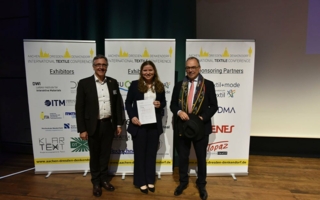30/12/2024 – Fashion — auf Deutsch lesen
Five key fashion trends to watch in 2025
The fashion industry is reinventing itself in the face of major economic, regulatory and technological challenges. Here are the five transformative trends that will redefine the sector in the coming years.
1. The need for a more granular reading of brand performance
Financial results within segments like luxury, mid-market and fast fashion are increasingly contrasting. While some luxury brands such as Gucci, face challenges, others - like Hermès, are thriving. This diverging trend underlines the importance of a detailed internal analysis of factors beyond mere market positioning. By 2025, a brand's performance will no longer be strictly tied to its category (luxury, mid-market or fast fashion), but will depend on the effective adaptation of its strategy aligning with the sector-specific constraints and evolving consumer expectations. In other words, tailored brand strategies will be the key to success.
2. Price increases vs. perceived value: the tricky equation
Amidst fierce competition from fast-fashion giants, many mid-market brands want to differentiate themselves through quality and style, often choosing to raise prices to stimulate growth. However, increasingly discerning consumers demand tangible value to justify these price hikes. Innovation, style, quality and sustainability are becoming essential criteria for success. By 2025, effectively balancing perceived value with pricing will be crucial for maintaining customer loyalty.
3. Stricter environmental regulations
Environmental regulations are not being implemented uniformly across regions, either in speed or intensity. However, all fashion brands, in Europe and beyond, will ultimately have to meet stricter standards regarding traceability, carbon footprint and ethics. Sustainability is no longer merely aspirational: it is becoming a legal obligation. By 2025, compliance with sustainability regulations will be an inescapable strategic challenge, potentially redefining production practices across the industry. This shift will significantly affect supply chains, particularly in Asia. Moreover, for brands and retailers, their integration of CSR strategies into business models will present a vital opportunity for differentiation. Material traceability will be an important issue: To truly claim to be sustainable, brands will first have to put robust traceability mechanisms in place. Without transparency and verified data, sustainability initiatives will be in vain. The adoption of advanced technology will become a critical enabler, helping brands align the demands of sustainability, responsibility, and profitability.
4. AI, driving efficiency and innovation
Artificial intelligence is revolutionizing the fashion landscape. Algorithms make it possible to anticipate trends, optimize inventories and even create designs. Simultaneously, AI is personalizing the customer experience to unprecedented levels, offering a competitive edge in a saturated market. In 2025, the most technologically agile brands will leverage these innovations to accelerate their growth while keeping pace with the rapidly evolving industry.
5. The emergence of new geographic markets
While Europe, the USA and even China are showing signs of economic slowdown, India and the Middle East are emerging as the next major growth opportunities. These regions, driven by robust economic growth and a demand for products tailored to local preferences, will play a critical role in 2025. Brands will be investing in tailor-made offers and region-specific retail and marketing strategies to win over these consumers.
Conclusion
Sustainability is no longer just an environmental initiative; it is now a core component of a brand’s economic model and decision-making process. The intersection of economy and ecology, or what we call “Econogy”, is driving businesses to merge corporate social responsibility (CSR) with profitability. Brands no longer need to choose between sustainability and economic growth – both can coexist and fuel each other.
In 2025, fashion brands that know how to adapt to these transformations – by optimizing their strategies, focusing on sustainability, and innovating through technology – will be the ones to lead in a rapidly evolving industry. The challenges are many, but so are the opportunities for those who dare to reinvent their business model.




